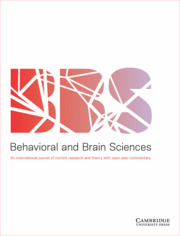Crossref Citations
This article has been cited by the following publications. This list is generated based on data provided by Crossref.
Penke, Lars
Denissen, Jaap J. A.
and
Miller, Geoffrey F.
2007.
The evolutionary genetics of personality.
European Journal of Personality,
Vol. 21,
Issue. 5,
p.
549.
Penke, Lars
Maniega, Susana Muñoz
Houlihan, Lorna M.
Murray, Catherine
Gow, Alan J.
Clayden, Jonathan D.
Bastin, Mark E.
Wardlaw, Joanna M.
and
Deary, Ian J.
2010.
White Matter Integrity in the Splenium of the Corpus Callosum is Related to Successful Cognitive Aging and Partly Mediates the Protective Effect of an Ancestral Polymorphism in ADRB2.
Behavior Genetics,
Vol. 40,
Issue. 2,
p.
146.
Glenn, Andrea L.
Kurzban, Robert
and
Raine, Adrian
2011.
Evolutionary theory and psychopathy.
Aggression and Violent Behavior,
Vol. 16,
Issue. 5,
p.
371.
Geher, Glenn
and
Kaufman, Scott Barry
2011.
The Cambridge Handbook of Intelligence.
p.
603.
Kozbelt, Aaron
Kaufman, Scott Barry
Walder, Deborah J.
Ospina, Luz H.
and
Kim, Joseph U.
2014.
Creativity and Mental Illness.
p.
102.
Geher, Glenn
Kaufman, Scott Barry
Planke, Julie A.
and
Di Santo, Jacqueline M.
2019.
The Cambridge Handbook of Intelligence.
p.
846.
Tunçel, Aslıhan
and
Rengiiyiler, Sezer
2025.
Encyclopedia of Domestic Violence.
p.
1.

